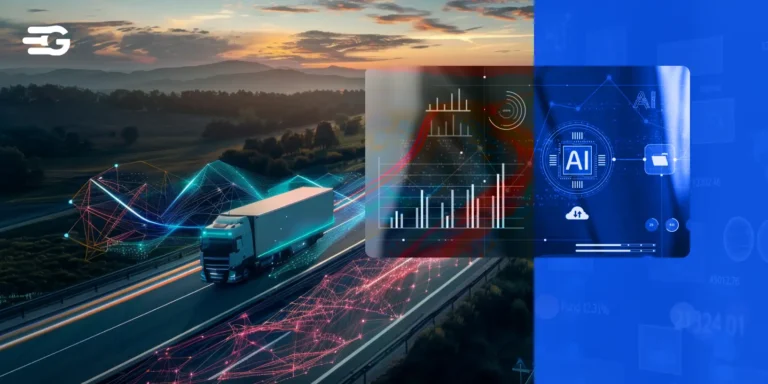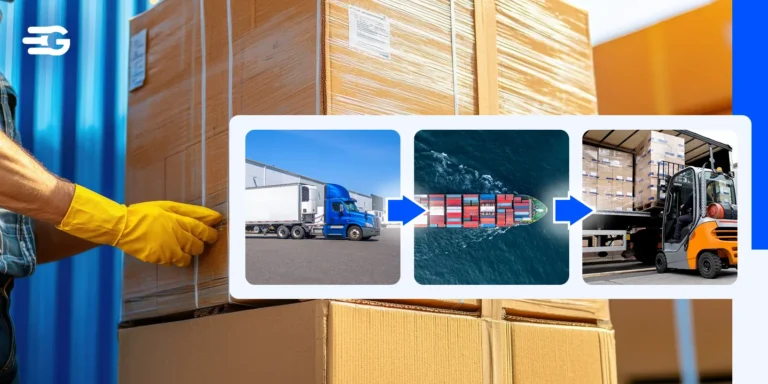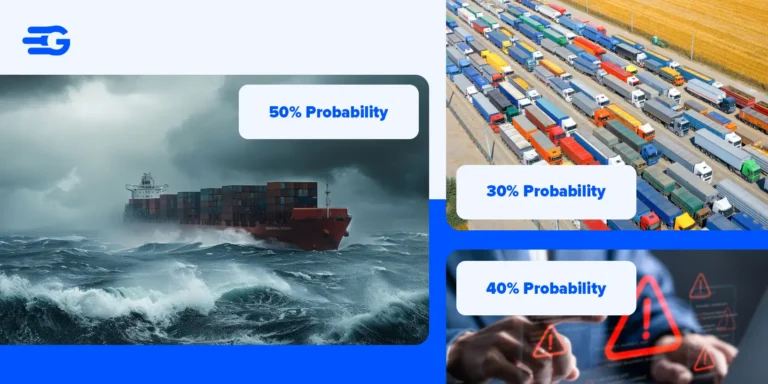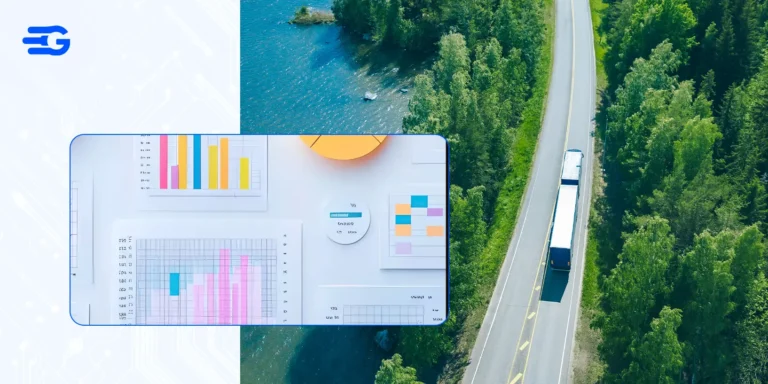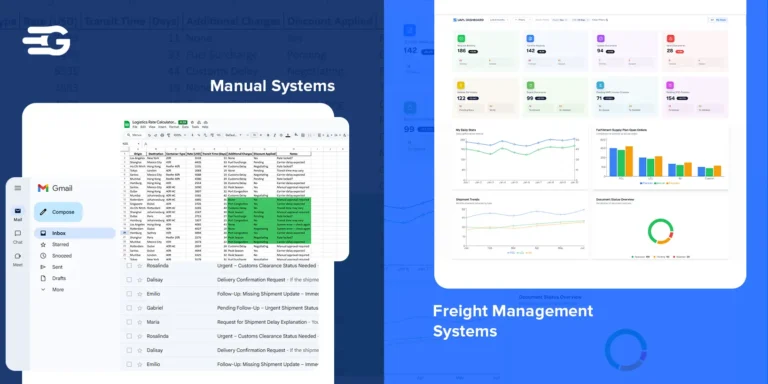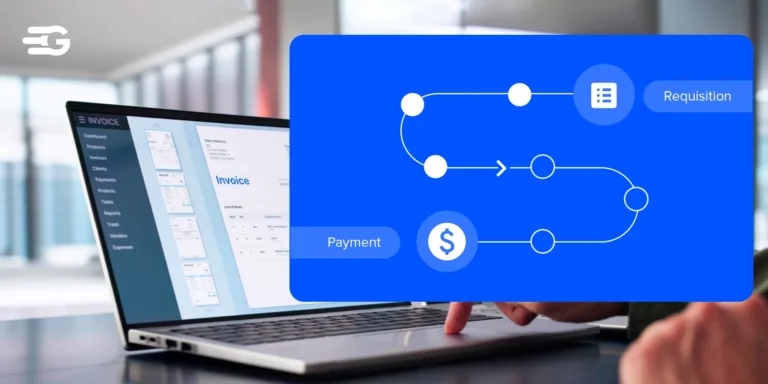Digital Supply Chain Explained – Benefits, Implementation, and More
Supply chains fail in predictable ways. Inventory sits in wrong locations, shipments vanish without updates, and costs climb while everyone scrambles to figure out what went wrong.
But what if your warehouse automatically told your suppliers when to ship more stock? What if delayed trucks triggered backup routes before customers even noticed? What if cost overruns showed up on your dashboard instead of your monthly statements?
Sounds like sci-fi right? Well, no more! That’s now totally possible with digital supply chain – a supply chain with systems that connect your entire operation so information flows as smoothly as your products should. We will delve deep into use cases, implementation, and more, but first, let’s start with nuts-and-bolts.
What Is a Digital Supply Chain?
A digital supply chain connects every part of your logistics operation through shared data and automated systems. Instead of managing suppliers, warehouses, and carriers separately through phone calls and emails, everything communicates through integrated technology platforms.
This connectivity happens through several key technologies working together. Some of them are listed below.
- IoT Sensors: Small devices that track shipments, monitor inventory levels, and report equipment status without human intervention
- Cloud Platforms: Centralized systems that let you access real-time data from any device, anywhere in your network
- AI and Analytics: Smart algorithms that spot patterns, predict problems, and suggest the fastest, cheapest routes automatically
- Mobile Apps: Tools that give drivers, warehouse staff, and managers instant updates and task notifications on their phones
- Automated Systems: Software that triggers reorders, reroutes shipments, and adjusts schedules based on real conditions without waiting for manual approval
This way, when something happens in one area, every other part knows about it instantly and can react accordingly.
Key Benefits for Your Business
Moving to a digital supply chain delivers measurable improvements that directly impact your bottom line. Here’s what changes when you stop flying blind and start operating with complete visibility:
- Real-Time Visibility: Know exactly where every shipment sits, what inventory levels look like, and which orders are running behind schedule – all from one dashboard instead of making dozens of phone calls.
- Cost Reduction: Eliminate the waste that comes from overstocking, emergency shipping, and rush orders by having accurate data to make smarter purchasing and routing decisions.
- Faster Problem Solving: Catch issues like supplier delays or equipment breakdowns before they cascade into bigger problems that affect customer deliveries and cost emergency fixes.
- Better Customer Service: Give customers accurate delivery windows and proactive updates about their orders instead of vague estimates and apologies when things go wrong.
- Data-Driven Decisions: Replace expensive guesswork with actual facts about which suppliers perform best, what routes save money, and where bottlenecks really occur in your operation.
- Improved Accuracy: Reduce human errors in tracking, ordering, and reporting that create costly mistakes and time-consuming corrections throughout your digital supply chain.
These benefits sound impressive, but the real question is how to actually achieve them in your specific operation.
Step-by-Step Implementation Process of Digital Supply Chain
Implementing a digital supply chain doesn’t mean ripping out everything and starting over. The wise approach focuses on solving your biggest problems first, then expanding systematically from there.
Step 1: Identify Your Biggest Pain Points
Document exactly where your current operation fails most often by tracking incidents for two weeks.
Record every late shipment, stockout, supplier communication breakdown, or customer complaint. Calculate the real cost of each problem – including staff time spent fixing issues, expedited shipping fees, and lost sales.
Rank these problems by total monthly cost impact. Focus your digital supply chain implementation on the top three most expensive issues first, as these will deliver the fastest return on investment.
Once you’ve identified your costliest problems, you’re ready to find the right technology solutions.
Step 2: Choose Compatible Systems
Research software that specifically addresses your top three pain points and can integrate with your existing systems through APIs or data exports.
Ask vendors to show exactly how their system would handle your specific scenarios – like what happens when a key supplier goes offline or how the system reroutes shipments during weather delays.
Get references from companies similar to your size and industry. Budget for implementation costs, monthly fees, and staff training time.
Choose systems that can grow with your business rather than solutions you’ll outgrow in two years.
With the right technology selected, you’ll need to test it carefully before committing your entire operation.
Step 3: Start Small with Pilot Program
Choose one specific area for testing – either your largest supplier relationship, busiest warehouse, or most problematic shipping route.
Set clear success metrics before starting like: reduce late deliveries by 25%, cut inventory checking time by 50%, or eliminate emergency orders by 75%. Run the pilot for 60-90 days while keeping your old systems as backup.
Success in your pilot program means your team is ready for training on the full system.
Step 4: Train Your Team
Create role-specific training programs – warehouse staff need different skills than dispatchers or purchasing managers.
Have each person practice common tasks like tracking shipments, updating inventory, or responding to alerts until they can do them confidently.
Pair experienced staff with newer team members during the first week of live operation. Create quick-reference cards for each workstation with step-by-step instructions for the most common tasks.
With your team trained and confident, you’ll need to monitor performance closely.
Step 5: Monitor and Optimize
Set up weekly performance reviews comparing key metrics before and after implementation.
Create automated reports that highlight exceptions – like shipments running more than 24 hours late or inventory counts that don’t match system records. Hold brief daily check-ins with department heads to identify and fix small problems before they become big ones.
Adjust your digital supply chain settings based on actual performance data, not initial assumptions. Document process improvements and share successful strategies across all departments.
Step 6: Scale Across Operations
Roll out to additional locations one at a time, using lessons learned from your pilot program. Train local champions at each site who can provide day-to-day support and troubleshooting.
Set up automated data sharing agreements so information flows seamlessly between all parties. Create backup procedures for system outages or connectivity issues. Schedule quarterly reviews to assess performance across all locations and identify opportunities for further improvement.
Using GoComet to Digitize Your Supply Chain
Most businesses struggle with scattered logistics systems that don’t talk to each other. GoComet solves this by connecting your entire supply chain through one platform that actually works.
Instead of juggling multiple software tools and constant phone calls, you get everything automated and integrated from day one.
| GoComet Feature | How It Digitizes Your Supply Chain |
| Automated Freight Procurement | Vendors compete automatically in reverse auctions to give you their lowest rates |
| Real-Time Container Tracking | All shipments tracked across ocean, air, road, and rail with instant alerts |
| Smart Invoice Processing | Automatically matches invoices to contracts and catches overcharges |
| Predictive Analytics | AI predicts delays and suggests backup routes before problems hit |
| Stakeholder Collaboration | Everyone sees the same data automatically – no more email chains |
GoComet already handles over 500 companies worldwide, so it’s proven to work at scale. Instead of building a digital supply chain piece by piece, you get everything connected from the start.
Bottomline
Manual processes that worked five years ago now cost more than automated alternatives, and the gap keeps widening. Every month you delay implementation, those costs compound while automation becomes more accessible.
Building a digital supply chain is an ongoing evolution of how you handle information and operations. The systems you implement today will keep improving and delivering better results as your business grows. Connected operations create compounding benefits that manual processes simply can’t match.
Start with your most expensive problem and automate that first. Build from there. Book a demo with GoComet to see how to eliminate your biggest logistics headaches.
